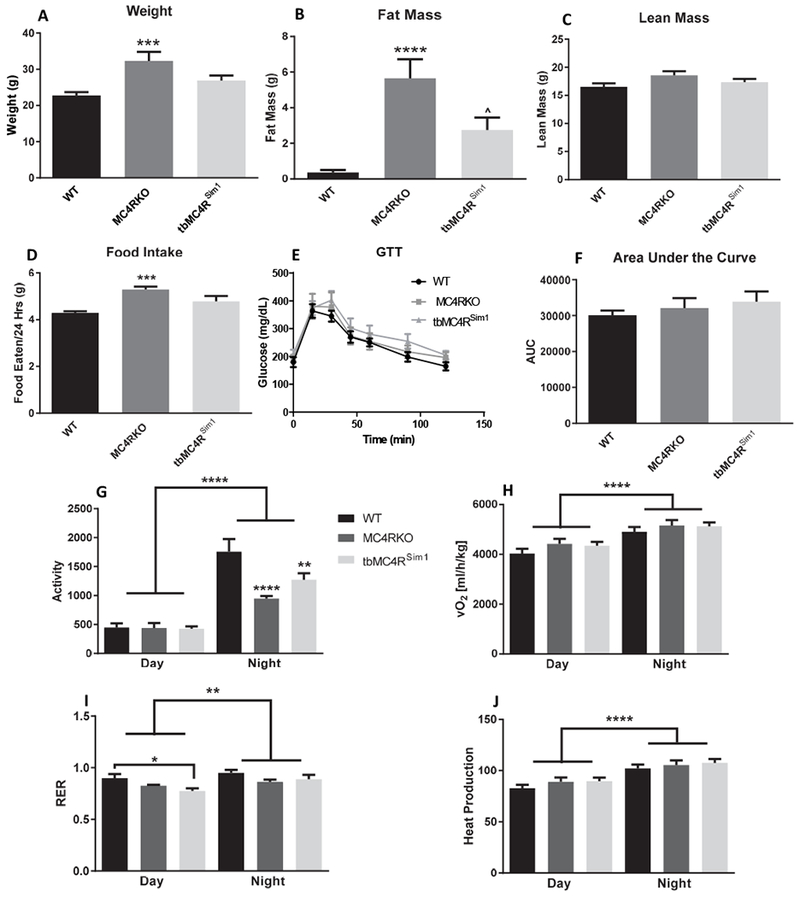Fig. 1.

Nuclear Magnetic Resonance (NMR) at 2 months of age. (A) MC4RKO mice had increased weight gain compared to WT and tbMC4RSim1 mice using a one-way ANOVA (N=8-11). (B) Fat mass was increased in MC4RKO mice compared to WT. (C) There was no difference in lean mass at two months of age between groups. (D) MC4RKO mice had increased food intake compared to WT mice. (E) Glucose Tolerance Testing (GTT) revealed no changes between groups. (F) The GTT data was also represented as the area under the curve (AUC). (G) Activity was reduced in MC4RKO mice at night compared with WT mice. (H) VO2 was not significantly different. (I) The respiratory exchange ratio (RER) showed that MC4RKO mice was reduced at night compared to controls. (J) Metabolic cages normalized to lean body mass revealed no difference in heat production. *=compared to WT, #=compared to tbMC4RSim1
